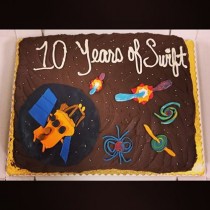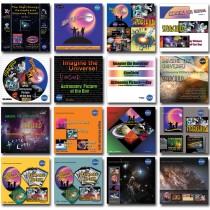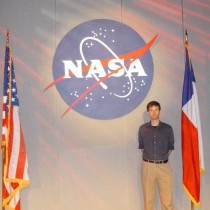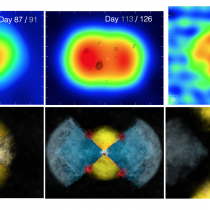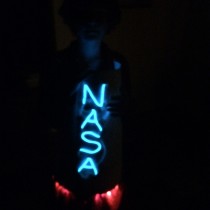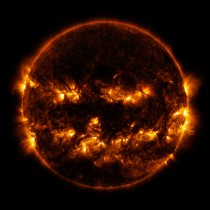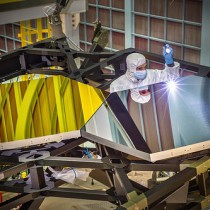Happy Birthday, Swift!
- By Maggie Masetti
- December 9, 2014
- Comments Off on Happy Birthday, Swift!
This is our third Happy Birthday post for a satellite in the last year or so – which is pretty cool actually, to have satellites that are hitting significant milestones and have had the longevity to still be doing great science. We had Fermi’s 5th birthday in August 2013, followed … Continue Reading →
Imagine the Universe
- By Maggie Masetti
- December 1, 2014
- Comments Off on Imagine the Universe
So the big news – that I’ll go ahead and put up front – is that the Imagine the Universe! site just got a big update! Go check it out! It’s ok, I’ll wait right here while you do. It’ll even open in a different tab/window! http://imagine.gsfc.nasa.gov In a nutshell, … Continue Reading →
Novae in Different Lights
- By Maggie Masetti
- November 25, 2014
- Comments Off on Novae in Different Lights
In part one of this series, we talked to researcher Laura Chomiuk about the scientific mysteries of novae V959 Mon. She has collaborated with two Blueshifters, Koji Mukai, and Tommy Nelson, who also study novae, but primarily at X-ray energies. We chatted with Tommy to learn more about his research … Continue Reading →
Mr. Clark Goes to Goddard
- By Maggie Masetti
- November 18, 2014
- Comments Off on Mr. Clark Goes to Goddard
Occasional Blueshift blogger Amber Straughn is currently working on Hubble’s 25th anniversary celebration. Currently working for her as an intern is Carl Clark. Carl has written the following blog for us about himself, getting to work on Hubble, and his general love for NASA. Enjoy! I am Carl Clark, a … Continue Reading →
Final Stop: Magnetars
- By Jason McCracken
- November 14, 2014
- Comments Off on Final Stop: Magnetars
We have one final blog from past summer intern Jason McCracken, wrapping up his adventures through space. Remember that time when we were all like Oooooh and Aaaaah? I miss those days. Since we began exploring these voids I’ve been starting to get a little bored. I mean look over … Continue Reading →
A “Noval” Mystery
- By Maggie Masetti
- November 10, 2014
- Comments Off on A “Noval” Mystery
The mystery around Nova V959 Mon was recently deciphered with the use of multiwavelength light – including radio, X-ray, and gamma-ray. First off, what is a nova? It’s basically a huge thermonuclear explosion that’s caused when a dense white dwarf star pulls material from an orbiting companion star onto itself. … Continue Reading →
The “Air” Up There
- By Maggie Masetti
- November 7, 2014
- Comments Off on The “Air” Up There
When NASA Goddard scientists Martin Cordiner and Conor Nixon took a look at the chemical make-up of the atmosphere of Titan using a millimeter wave telescope, what they found was surprising. Cordiner led an international team in a study of Saturn’s moon using the Atacama Large Millimeter/submillimeter Array (ALMA), a … Continue Reading →
SpaceCrafts: Realistic Rockets and Other Adventures in Space Costuming for Kids…
- By Maggie Masetti
- November 4, 2014
- Comments Off on SpaceCrafts: Realistic Rockets and Other Adventures in Space Costuming for Kids…
Last year at Halloween, Dirk Schoellner tweeted a shot of one of his sons dressed up for Halloween – as the James Webb Space Telescope costume. We, of course loved it, so the Schoellners did a tutorial for us about how they built it. This was not their first year … Continue Reading →
Spooky Astronomy, part 5
- By Maggie Masetti
- October 31, 2014
- Comments Off on Spooky Astronomy, part 5
Welcome back for Spooky Astronomy! Over the years, we’ve shared our favorite Halloween-ish images to get into the spirit [no pun intended] of the season! Past Spooky Astronomy posts: 2010, 2011, 2012, 2013. Here are a few fresh images for this year: Jack-o’-lantern! It was nice of the sun to … Continue Reading →
Silver and Gold
- By Maggie Masetti
- October 17, 2014
- 2 Comments
The other big news for the James Webb Space Telescope is the tests they are doing, mounting mirrors onto the test version of the structure that will secure them to the telescope. This structure is called the backplane, and it’s like the spine of the spacecraft. The test version of … Continue Reading →


